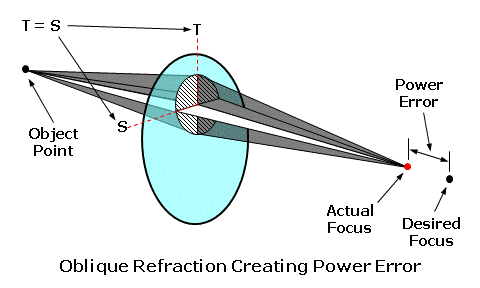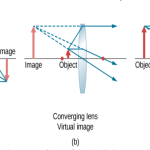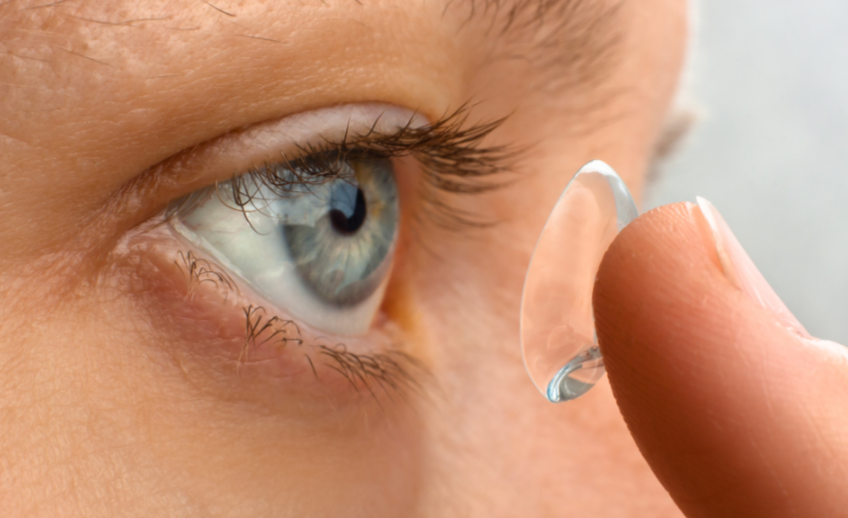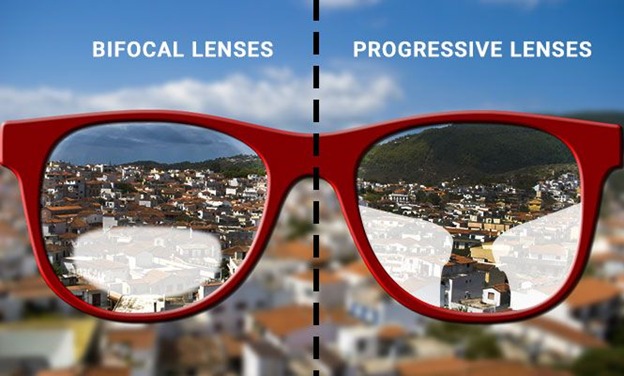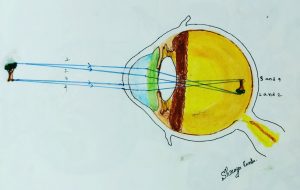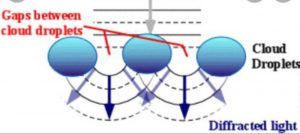Aberration
Aberration is defined as an optical system performance from the prediction of paraxial optics. In the image formation system, it occurs when light from one point of an object does not converge or diverge from single point of focus after transmission through the system.
Aberration is an optical property system such as lenses that causes light to be scattered over the surface of the lens rather than focusing on the single point. Aberration causes the image formed through the lens plane is blurred or distorted (with the nature of distortion depending on the type of aberration).
When a narrow beam of light is obliquely incident on a refracting surface, astigmatism is introduced, and the image of a point source formed by a small lens aperture becomes a pair of focal lines, a series of beam sections being indicated.
Oblique astigmatism is an aberration which occurs when rays of light traverse a spherical lens obliquely. When a pencil of light strikes the lens surfaces obliquely a toric effect is introduced. The emerging rays form a Sturm’s conoid with two line foci oblique astigmatism. FH and FV represent the horizontal and vertical line foci of a Sturm’s conoid.
In other words, its defined as oblique astigmatism is an aberration that results when rays of light from an object in the periphery strike the lens obliquely, and are refracted differently by the tangential and sagittal meridians of the lens. When light is incident upon a surface at an angle, it produces such an astigmatic focus.
Oblique astigmatism occurs with spectacle lenses when the line of sight is not parallel with the principal axis of the lens. This is unavoidable in the case of the near portion of a multifocal lens. It may also be a cause of reduced acuity in patients with restricted eye movement who adopt a compensatory head posture and look obliquely through peripheral portions of their spectacle lenses. Obviously, the higher the spectacle lens power, the greater the unwanted cylindrical power induced by the aberration.
In daily life adults spend most time looking slightly downward from the primary position, and spectacles are therefore made with the lower borders of the lenses tilted towards the cheek (pantoscopic tilt). This also slightly reduces the obliquity of the reading portion of multifocal lenses. However, it may be a cause of intolerance in high power spectacle wearers if new frames are dispensed which have a different angle of pantoscopic tilt from the patient’s previous glasses.
Furthermore, oblique astigmatism is considerably affected by the form of the lens used. It is much worse in biconvex and biconcave lenses than in meniscus lenses. Calculations have been made and tables compiled indicating the optimum form of single lenses for reducing both spherical and oblique aberrations. Such lenses are known as best form lenses, and they are usually in meniscus form.
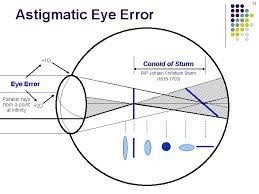
Some experimental studies on steeper lens aberration effect in the case of oblique illumination sources are presented. The results are compared to that of conventional illumination sources. Due to the unique feature of oblique illumination source imaging that is, imaging by using only zero and the first diffraction order of light, both steeper resolution limit the depth of focus (DOF) are extended. As a result, the effects of lens aberration in resist are also different from that of conventional illumination sources. Unlike the conventional illumination source, the net effect of steeper lens aberration in resists depends not only on both amount and the types of the lens aberration, but also on the mask features pattern i.e., lens surface image distortions or difficultly in focusing of the image patterns.
In case of the lens image distortion, unlike the other type of lens aberration, the oblique illumination source does not show any improvement as compared to that of convention illumination source. It does not show pattern dependent distortion effect either. In the experiment, an effect of a steeper lens aberration in resist for both convention illumination an quadrploe illumination sources (mostly astigmatism) were measured.
Ocular Oblique Astigmatism
This aberration occurs in the human eye but its visual effect is minimal. The factors which reduce ocular oblique astigmatism are as follows:
(1) The aplanatic curvature of the cornea reduces oblique astigmatism as well as spherical aberration.
(2) The retina is not a plane surface, but a spherical surface. In practice the radius of curvature of the retina in the emmetropic eye means that the circle of least confusion of the Sturm’s conoid formed by oblique astigmatism falls on the retina.
(3) Finally, the astigmatic image falls on peripheral retina which has relatively poor resolving power compared with the retina at the macula. Visual appreciation of the astigmatic image is therefore limited.

